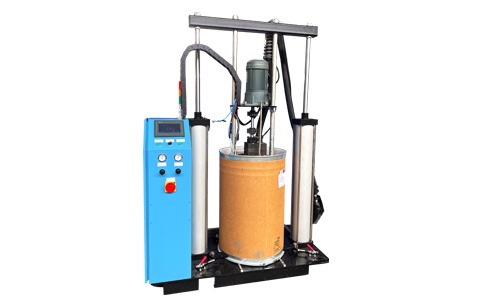 HOT LINE: 086-577-65159218
HOT LINE: 086-577-65159218
INDUSTRY NEWS
INDUSTRY NEWS

The rapid adoption of moisture-reactive polyurethane (PUR) hot melt adhesives across industries has driven significant advancements in coating machinery design. Unlike conventional hot melt applicators, PUR-specific coating systems integrate specialized engineering to address the material's unique curing behavior and performance requirements. This article explores the technological innovations, operational benefits, and strategic considerations for implementing PUR adhesive coating systems in industrial settings.
PUR hot melt adhesives demand precise handling due to their moisture-triggered crosslinking mechanism. Modern coating machines incorporate critical features to optimize performance:
Intelligent Thermal Control: Multi-zone heating systems maintain exact adhesive viscosity by regulating temperatures within narrow tolerances. Insulated pathways prevent premature curing while ensuring consistent flow characteristics.
Moisture Mitigation: Advanced sealing technologies and inert gas purging systems protect adhesive integrity, blocking environmental humidity from activating the curing process prematurely.
Adaptive Dispensing: Programmable applicators adjust bead profiles and coating patterns dynamically, accommodating substrates ranging from porous wood composites to delicate electronic components.
PUR coating systems outperform traditional adhesive applicators through enhanced process capabilities:
Reduced Material Waste: Precision metering systems minimize overspray and enable ultra-thin bond lines, significantly lowering adhesive consumption compared to flood-coating methods.
Faster Production Cycles: Instant tack strength and rapid curing eliminate post-processing delays, supporting high-speed continuous manufacturing workflows.
Versatile Bonding Solutions: Configurable nozzle arrays and robotic positioning systems allow seamless transitions between 2D surface coating and complex 3D geometries.
In sectors like automotive manufacturing, these systems enable reliable bonding of dissimilar materials (e.g., metals to plastics), while in electronics, they support micron-scale encapsulation of sensitive components.
PUR coating machines revolutionize edge banding and panel lamination processes. Their ability to apply uniform adhesive layers on irregular surfaces ensures bubble-free bonding of decorative veneers, even on moisture-sensitive substrates. The instant grab strength prevents shifting during pressing operations, critical for curved or textured surfaces.
High-speed rotary coaters with synchronized temperature management enable reliable film-to-film lamination. Advanced tension control mechanisms maintain dimensional stability during rapid substrate feeding, essential for heat-sensitive biodegradable films.
Programmable dispensing heads apply protective PUR coatings on wire harnesses and sensors, creating moisture-resistant barriers without compromising heat dissipation. Robotic integration allows precise application in confined assembly spaces.
When evaluating PUR coating equipment, consider these key factors:
Material Compatibility: Verify resistance to isocyanate residues and capacity to handle varying adhesive viscosities.
Process Scalability: Modular designs that accommodate future upgrades in automation or throughput.
Sustainability Alignment: Energy-efficient thermal management and closed-loop adhesive recovery systems.
Safety Compliance: Explosion-proof configurations for environments with combustible dust or vapors.
Leading systems now incorporate self-diagnostic sensors and predictive maintenance algorithms, minimizing unplanned downtime.
The next generation of PUR coating technology focuses on smarter, more sustainable processes:
Hybrid Curing Systems: Combine PUR chemistry with UV or thermal activation for tailored curing profiles.
AI-Driven Process Optimization: Machine learning algorithms analyze coating patterns in real time, automatically adjusting parameters for defect-free output.
Low-Temperature Processing: Novel heating methods enable PUR application on thermally sensitive bio-based substrates.
Conclusion
Modern PUR hot melt adhesive coating systems represent a paradigm shift in industrial bonding technology. By bridging the gap between thermoset performance and thermoplastic processing efficiency, these machines empower manufacturers to meet escalating demands for durable, eco-conscious products. As material science advances, continued innovation in application technology will drive PUR adhesives into new frontiers of high-performance manufacturing.

Innovations in Hot Melt Adhesive Coating Machines: Driving Efficiency and Sustainability
2025-04-14
Big data analysis will guide and promote the production of Waterproof production line industry
2025-04-12
Increased recognition of domestic Polymer Waterproof Coiled Material Production Line in the market
2025-04-12
Innovation-Driven Evolution: Technological Advancements in Plastic Sheet Extrusion Lines
2025-04-12
Tel: 086-577-65159218
Email: jaynn@jaynn.com
Add: No.1,Area C,Wandong Intelligent Manufacturing Industrial Park,Zhejiang Province,China.
SUBSCRIBE
Get the latest updates in real-time
Scan WeChat

Scan Tiktok

